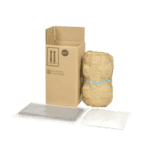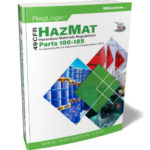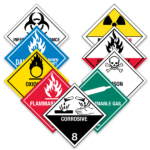DOT Posts Final Rule for Enhanced Safety in Lithium Battery Air Transport
The U.S. Department of Transportation (DOT) has just published a Final Rule (HM224I) regarding the safe transport of lithium batteries by air. This rule will implement requirements that had been first stated as an interim rule and will ensure that lithium batteries are shipped according to the most current safety standards.
Some of these provisions will be similar to those found in the regulations from the International Civil Aviation Organization (ICAO), while others are specific to the United States.
This Final Rule will follow the interim rule in the following areas:
- Prohibiting the transport of lithium-ion cells and batteries as cargo on passenger aircraft.
Originally, the Hazardous Materials Regulations of Title 49 of the Code of Regulations (49 CFR) concentrated mainly on keeping lithium metal cells and batteries (which are primarily non-rechargeable) from passenger shipment. However, current international regulations, such as the ICAO Technical Instructions on the Safe Transport of Dangerous Goods by Air consider rechargeable lithium-ion batteries are also too great a risk for passenger aircraft. (Note that these restrictions will only apply to lithium batteries shipped as standalones without equipment – batteries packed with or installed in equipment can still be shipped by passenger aircraft, within certain weight limits per package.) - Restricting rechargeable lithium-ion batteries to no more than a 30 percent state of charge (SOC) when shipped by air, rather than a full charge.
Safety tests have determined that lithium batteries are safest, from a fire standpoint when charged to approximately a third of their full state of charge. Therefore, lithium-ion batteries should not be shipped in a fully charged state. (Obviously, this doesn’t apply to non-rechargeable batteries, since this would render them of little use when received, but it does mean that shippers of rechargeable batteries should not send their batteries in a fully charged state.) This will be achieved by a new special provision for lithium-ion batteries, A100. It will only apply to standalone batteries, not batteries shipped in or packed with equipment. - Improving the consistency of marking low-powered (“small”) lithium batteries.
For example, standalone packages of lithium-ion batteries must now be marked with either the cargo aircraft only label as per ICAO, or with a marking in text that the batteries are prohibited from passenger aircraft. - Restricting low-powered (small) lithium battery shipments by air to no more than one package per consignment or overpack.
The Final Rule will become effective on January 20, 2023. However, since in effect it is formalizing the Interim Final Rule as a Final Rule, most of the requirements would already have been in effect.
Questions?
Lithium batteries are a constantly changing area of regulations. Do you have questions on how to ship yours? Speak to one of our Regulatory Experts at (855) 734-5469. We can advise you on current and upcoming regulations.
Sources: Federal Register, December 21, 2022, https://www.govinfo.gov/content/pkg/FR-2022-12-21/pdf/2022-27563.pdf
Stay up to date and sign up for our newsletter!
We have all the products, services and training you need to ensure your staff is properly trained and informed.
 Lithium Battery Shipping Kit |









 ICC USA
ICC USA ICC Canada
ICC Canada